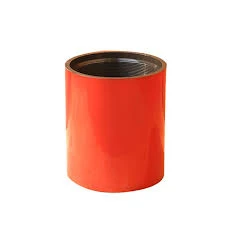- Afrikaans
- Albanian
- Amharic
- Arabic
- Armenian
- Azerbaijani
- Basque
- Belarusian
- Bengali
- Bosnian
- Bulgarian
- Catalan
- Cebuano
- Corsican
- Croatian
- Czech
- Danish
- Dutch
- English
- Esperanto
- Estonian
- Finnish
- French
- Frisian
- Galician
- Georgian
- German
- Greek
- Gujarati
- Haitian Creole
- hausa
- hawaiian
- Hebrew
- Hindi
- Miao
- Hungarian
- Icelandic
- igbo
- Indonesian
- irish
- Italian
- Japanese
- Javanese
- Kannada
- kazakh
- Khmer
- Rwandese
- Korean
- Kurdish
- Kyrgyz
- Lao
- Latin
- Latvian
- Lithuanian
- Luxembourgish
- Macedonian
- Malgashi
- Malay
- Malayalam
- Maltese
- Maori
- Marathi
- Mongolian
- Myanmar
- Nepali
- Norwegian
- Norwegian
- Occitan
- Pashto
- Persian
- Polish
- Portuguese
- Punjabi
- Romanian
- Russian
- Samoan
- Scottish Gaelic
- Serbian
- Sesotho
- Shona
- Sindhi
- Sinhala
- Slovak
- Slovenian
- Somali
- Spanish
- Sundanese
- Swahili
- Swedish
- Tagalog
- Tajik
- Tamil
- Tatar
- Telugu
- Thai
- Turkish
- Turkmen
- Ukrainian
- Urdu
- Uighur
- Uzbek
- Vietnamese
- Welsh
- Bantu
- Yiddish
- Yoruba
- Zulu
coupling tube fitting
The Essential Guide to Coupling Tube Fittings
Coupling tube fittings are pivotal components in many industries, serving as connectors that facilitate the secure attachment of two segments of tubing. These fittings are essential in systems where fluid transfer is necessary, such as in hydraulic or pneumatic systems, and in various applications including manufacturing, automotive, and medical devices. Understanding the features, types, and applications of coupling tube fittings can significantly aid in selecting the right components for specific projects.
What Are Coupling Tube Fittings?
Coupling tube fittings are mechanical devices designed to join two pieces of tubing together. They serve to create a leak-proof connection and ensure that fluids can flow freely between sections of a system. The fittings can come in various sizes and shapes, depending on the specific requirements of the application.
Types of Coupling Tube Fittings
There are several types of coupling tube fittings, each tailored to meet different needs
1. Compression Fittings These fittings use a compression mechanism to secure the tubing in place. They are widely used due to their ability to create a strong and reliable seal without the need for soldering or welding. Compression fittings are ideal for systems that may need disassembly, as they can be easily removed and reused.
2. Flare Fittings Flare fittings consist of a conical shape that allows for a tight seal when the two pieces of tubing are brought together. They are primarily utilized in high-pressure applications where a robust and reliable connection is crucial.
3. Push-to-Connect Fittings As the name suggests, push-to-connect fittings allow for quick and easy installation. The tubing simply needs to be pushed into the fitting, where internal mechanisms grip and seal the tubing. This type is popular in industries where rapid assembly and disassembly are required.
4. Barbed Fittings Barbed fittings are designed with ridges that secure tubing firmly in place once it is pushed onto the fitting. They are often used in applications where flexible tubing is involved, such as in cooling systems or medical devices.
5. Socket Weld and Butt Weld Fittings These fittings are used in more permanent applications, where the tubing is welded to the fitting. They provide a very strong and enduring connection, suitable for high-pressure systems.
Materials Used in Coupling Tube Fittings
coupling tube fitting

The material of the coupling tube fittings plays a significant role in their performance and longevity. Common materials include
- Brass Known for its corrosion resistance and strength, brass is a common choice for fittings used in plumbing and chemical applications. - Stainless Steel This material is ideal for applications requiring high strength and corrosion resistance, making it popular in the food and beverage industry, as well as in pharmaceuticals.
- Plastic Lightweight and resistant to certain chemicals, plastic fittings are often used in less demanding environments, such as garden hoses or low-pressure water systems.
Applications of Coupling Tube Fittings
Coupling tube fittings find applications across various sectors
1. Automotive These fittings are used in fuel lines, coolant systems, and air conditioning systems, where durable and leak-proof connections are essential.
2. Manufacturing In manufacturing plants, coupling tube fittings are integral in pneumatic systems that operate machinery and convey materials.
3. Medical Devices In the medical field, these fittings are employed in oxygen lines, intravenous (IV) tubing, and other healthcare applications where sterility and reliability are paramount.
4. HVAC Systems Coupling tube fittings are critical in heating, ventilation, and air conditioning systems, ensuring proper airflow and optimal performance.
Conclusion
Coupling tube fittings are essential components in a vast array of industries, providing the necessary connections for fluid transfer systems. With various types available, including compression, flare, push-to-connect, and barbed fittings, along with materials like brass, stainless steel, and plastic, selecting the right fitting for a specific application is crucial. Understanding these components enables engineers and technicians to ensure reliability and efficiency in their systems, ultimately leading to smoother operations and improved outcomes in their respective fields.
-
Tubing Pup Joints: Essential Components for Oil and Gas OperationsNewsJul.10,2025
-
Pup Joints: Essential Components for Reliable Drilling OperationsNewsJul.10,2025
-
Pipe Couplings: Connecting Your World EfficientlyNewsJul.10,2025
-
Mastering Oilfield Operations with Quality Tubing and CasingNewsJul.10,2025
-
High-Quality Casing Couplings for Every NeedNewsJul.10,2025
-
Boost Your Drilling Efficiency with Premium Crossover Tools & Seating NipplesNewsJul.10,2025







